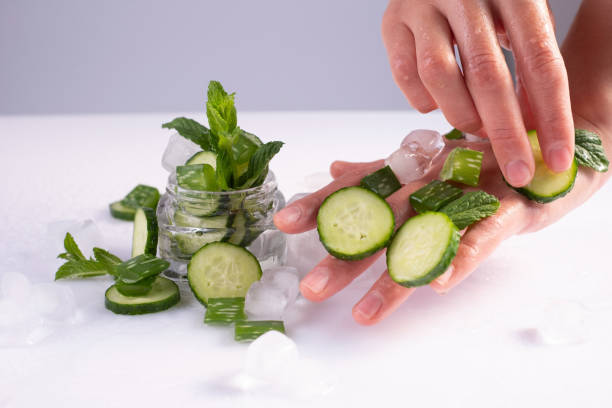
Nail art is the intricate practice of embellishing and enhancing nails, often referred to as nail art design, encompassing a diverse array of creative expressions. In the realm of nail artistry, various tools and techniques are employed to achieve stunning results. Among these, UV nail lamps hold a crucial role in the process, effectively solidifying and enhancing the visual impact of nail polish. However, it’s important to acknowledge that a substantial number of individuals experience an array of allergic reactions following a manicure. As a result, this article aims to comprehensively explore the potential susceptibility to allergies stemming from UV nail lamps, the underlying factors driving these reactions, and proactive measures to mitigate potential risks.
• Emission of Ultraviolet Light:
UV nail lamps are engineered to emit ultraviolet light, a form of electromagnetic radiation characterized by wavelengths shorter than those of visible light. These lamps predominantly release UVA and UVB rays. UVA rays encompass longer wavelengths, while UVB rays feature shorter wavelengths. These rays exist within the ultraviolet spectrum, positioned beyond the violet extremity of the visible light spectrum.
• Photopolymerization – The Key Process:
Central to the functionality of UV nail lamps is a process known as photopolymerization. This chemical reaction is instigated by the emission of UV light from the lamp. When UV light interacts with specific compounds present in the nail polish, such as photoinitiators, it sets off a rapid cross-linking response. This cascade triggers the conversion of liquid nail polish into a resilient, hardened coat, culminating in a glossy finish.
• Significance of Wavelengths:

UV nail lamps emit light across a spectrum of wavelengths, predominantly focusing on UVA and UVB rays. UVA rays typically possess longer wavelengths, ranging around 320 to 400 nanometers, while UVB rays are characterized by shorter wavelengths, approximately 280 to 320 nanometers. Meticulous selection of these wavelengths is aimed at optimizing the photopolymerization process, ensuring efficient curing of nail polish.
• Striking a Balance Between Efficiency and Safety:
It is crucial to note that while UV nail lamps are pivotal in achieving impeccable nail art results, ongoing research and development aim to reconcile curing efficiency with the potential health risks associated with prolonged UV exposure. Iksbeauty continues to refine the design of UV lamps to minimize unnecessary UV exposure while maximizing the curing process. Models such as NL491 and NL471 are thoughtfully crafted with this very objective in mind, harnessing the benefits of both UV and LED nail lamps.
Allergic reactions are intricate processes that involve the body’s immune system responding to perceived threats. When an individual comes into contact with a potential allergen, such as certain chemicals present in nail products, the immune system springs into action. Specialized immune cells, such as mast cells and basophils, recognize the foreign substance as an intruder. This recognition initiates a cascade of events, ultimately leading to the release of immunoglobulin E (IgE) antibodies.
• Varying Degrees of Skin Sensitivity:
Skin sensitivity varies widely among individuals, influencing how their bodies react to allergens. Some individuals naturally possess skin that is more prone to allergic reactions due to a heightened immune response. Factors such as genetics, previous exposures, and underlying health conditions contribute to this variation.
• The Cumulative Effect of Chemical Exposure:
The connection between repeated exposure to certain chemicals in nail products and the development of allergies is a significant concern. As individuals engage in frequent nail art sessions, the skin’s exposure to these chemicals accumulates over time. This prolonged exposure increases the likelihood of sensitization, wherein the immune system becomes sensitized to the particular allergen.
Reason 1: Nail Lamp Impact
Nail lamps utilized during nail art procedures can often be irritating to the skin due to the light they emit. Individuals who are allergic may experience adverse reactions subsequent to using these lamps.
Reason 2: Assorted Materials
The nail art process entails the utilization of various substances, including adhesives, resins, plasticizers, solvents, and pigments. Any of these components can potentially trigger allergic reactions.
Differentiating between an allergic reaction to glue and a photo allergy is possible by examining the location of blisters. Blisters that occur farther away from the nail are more indicative of a photo allergy.
Allergic reactions often manifest as redness, swelling, itching, and skin irritation around the nails. Additionally, the removal of protective cuticles during nail art exposes the nails to potential infections. Patients may experience symptoms like gingivitis and eczema. Assessing one’s individual situation is pivotal in determining whether nail art procedures can be undertaken.
Temporary remedies for allergies include cold compresses, application of anti-allergy ointments, and avoiding chemical-laden hand sanitizers and detergents. However, immediate medical attention is advised for tailored treatment based on the severity of the allergic reaction.

• Opt for Established Nail Salons:
Choose reputable, well-maintained nail salons with stringent hygiene standards. Ensure that nail instruments undergo sterilization to reduce the risk of skin allergies.
• Sunscreen Application:
Prior to nail procedures, applying sunscreen can offer protection against UV rays and minimize potential skin damage.
• Protective Measures:
Wearing gloves and wrapping the nail periphery with athletic tape can effectively mitigate light-induced allergies.
• Avoid Over-Frequent Manicures:
Excessive manicure sessions can overexpose the skin to chemical stimuli, increasing the risk of skin allergies.
• Substituting Solvent Glues:
Consider substituting solvent glues with alternatives like alcohol and nail polish removers, and utilize reinforcements and extender glues.

By exploring the intricate workings of UV nail lamps and the potential for allergic reactions, we’ve revealed the intricate relationship between science and aesthetics. The emission of ultraviolet light, combined with the process of photopolymerization, stands as the foundation of achieving flawless nail art. However, the varied responses and sensitivities of the human body serve as a reminder of the importance of vigilance. As you strive to create captivating nail designs, remember to master the delicate balance between artistic creativity and conscientious care.
16 Years
Experience
12 Months
Warranty
Monday - Sunday
24/7 Customer Support
Be the first to know about special offers, new innovations and more.